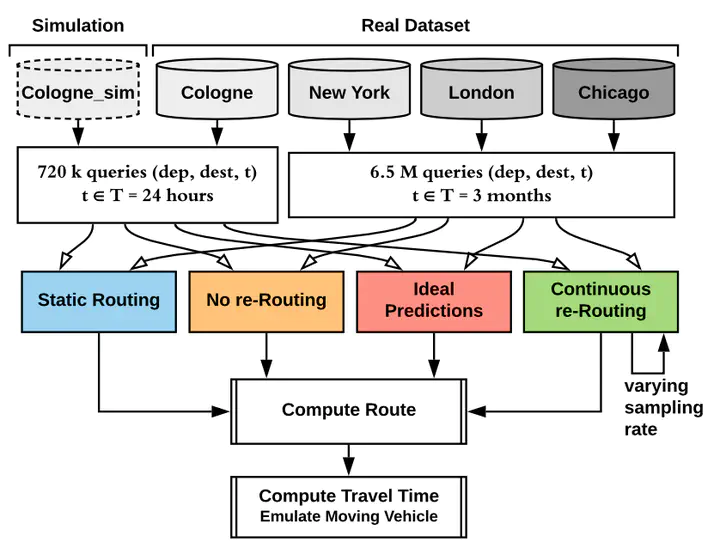
Abstract
Route planning represents a major challenge with a substantial impact on safety, economy, and even climate. An ever-growing urban population caused a significant increase in commuting times, therefore, stressing the prominence of efficient real-time route planning. In essence, the goal is to compute the fastest route to reach the target location in a realistic environment where traffic conditions are time-evolving. Consequently, a large volume of traffic data is potentially required and the route continuously updated. We thereby address the re-routing problem to answer questions such as when, how often, and where is re-routing worthwhile. We base our study on a real dataset, comprising the travel times of the road segments of New York, London, and Chicago, collected over three months. By exploiting this dataset, we implement an optimal algorithm, able to mimic ideal predictions of road segment speeds in the network. Thereby, allowing us to compute the lower bound of travel-time to serve as a reference against other routing techniques. Mainly, we quantify the achieved travel-time gain of a static, no re-routing, and continuous re-routing strategies. Surprisingly, we find that traffic conditions are sufficiently stable for short time windows, and re-routing a vehicle is very seldom useful when exploiting accurate statistics at departure time. Typically, real-time re-routing should only be triggered during rush hours, for long routes, passing through well-identified road segments.